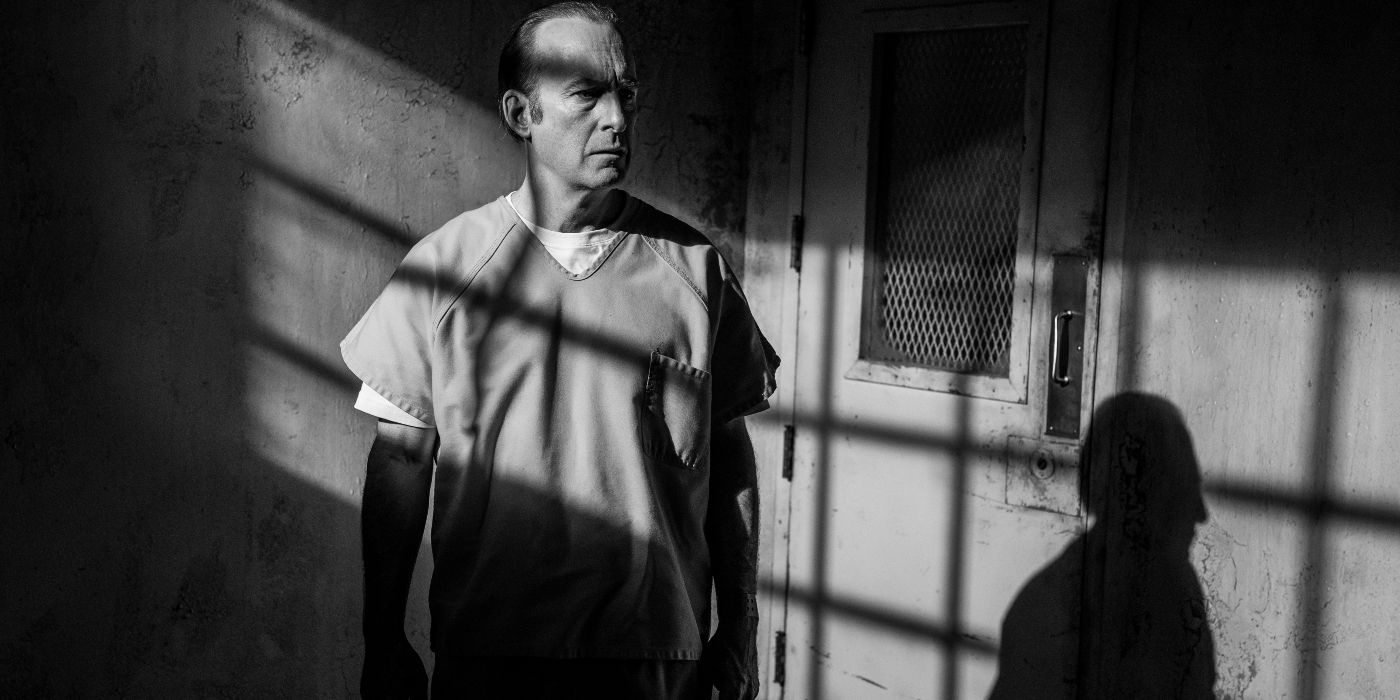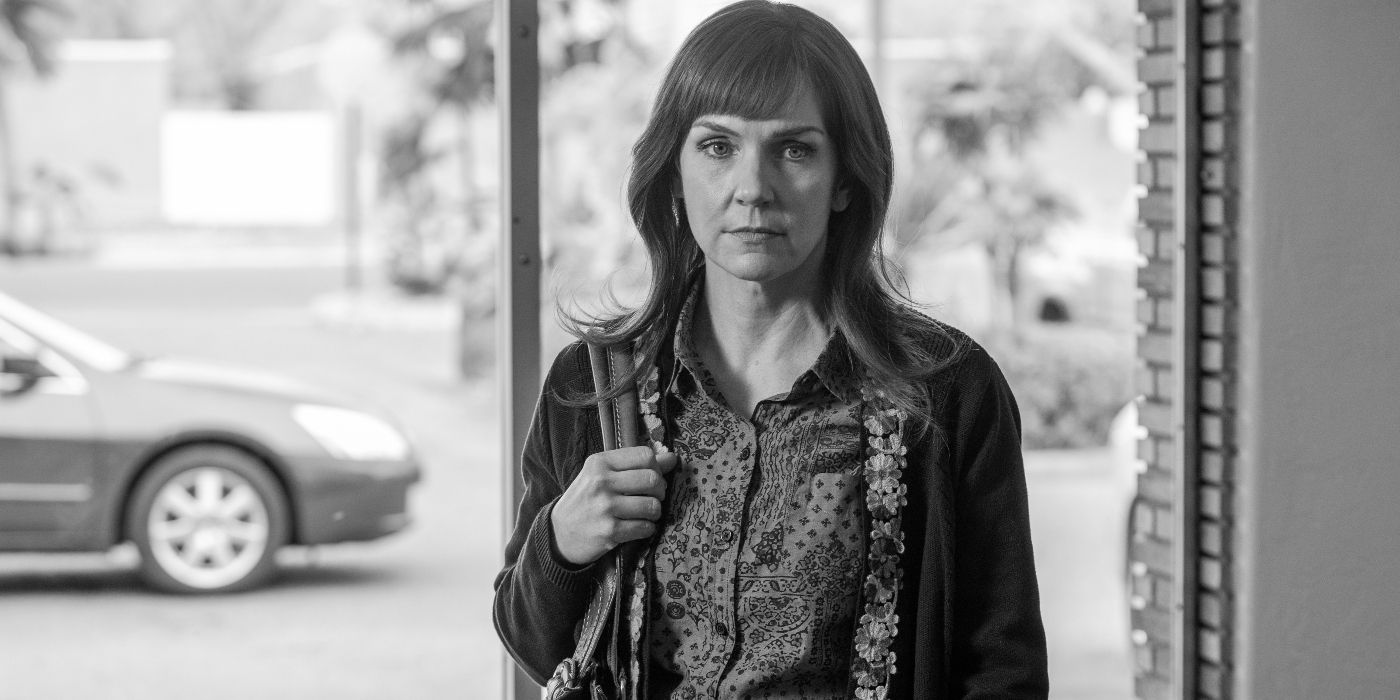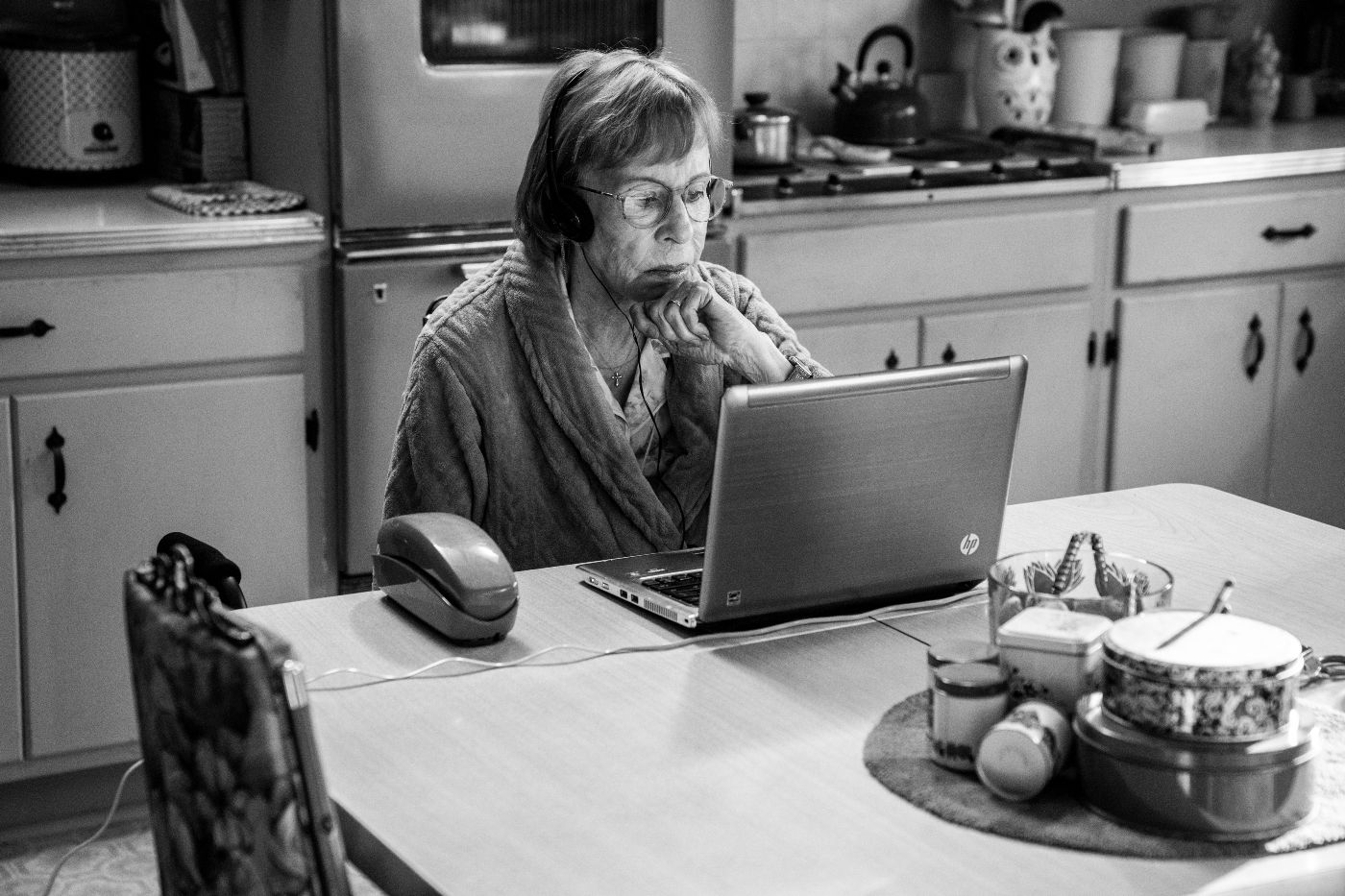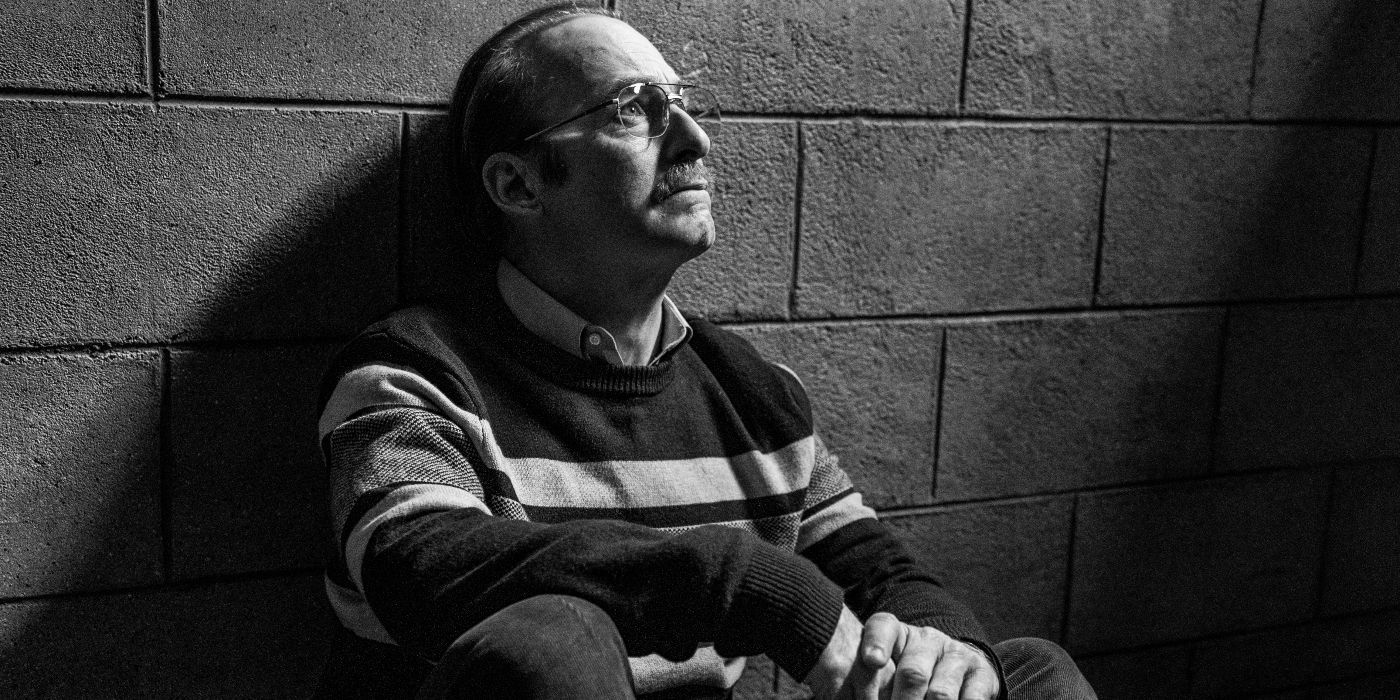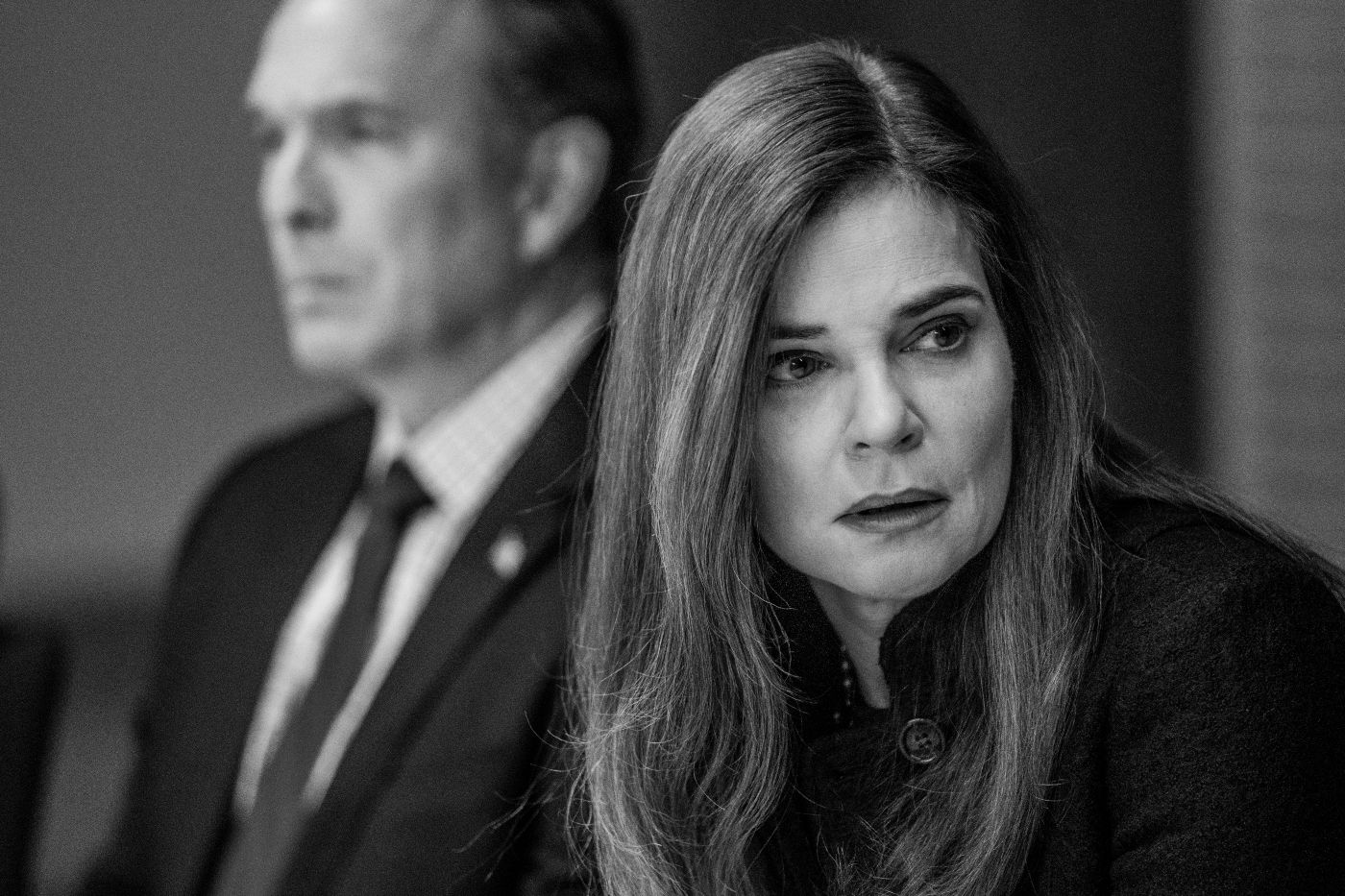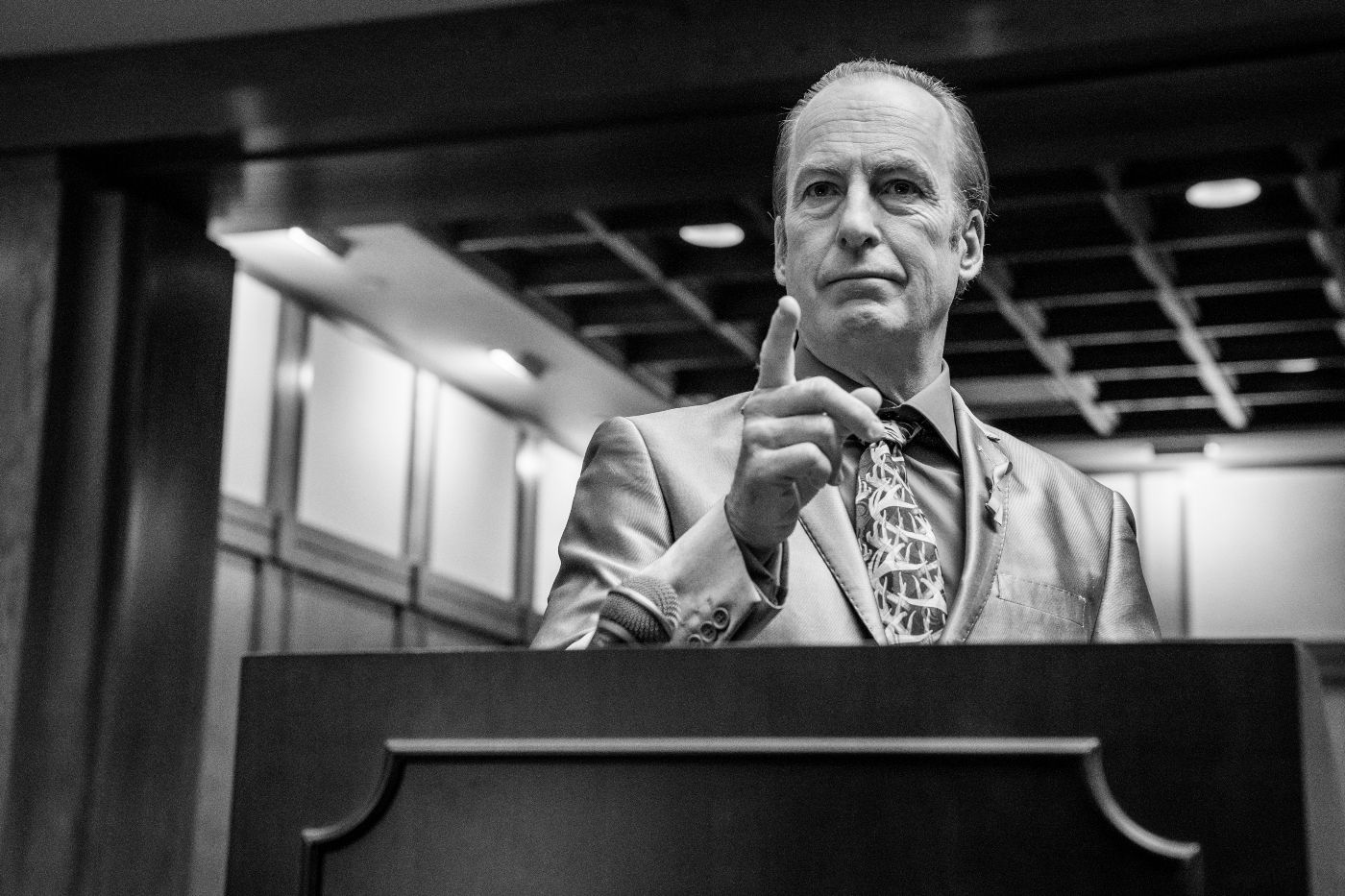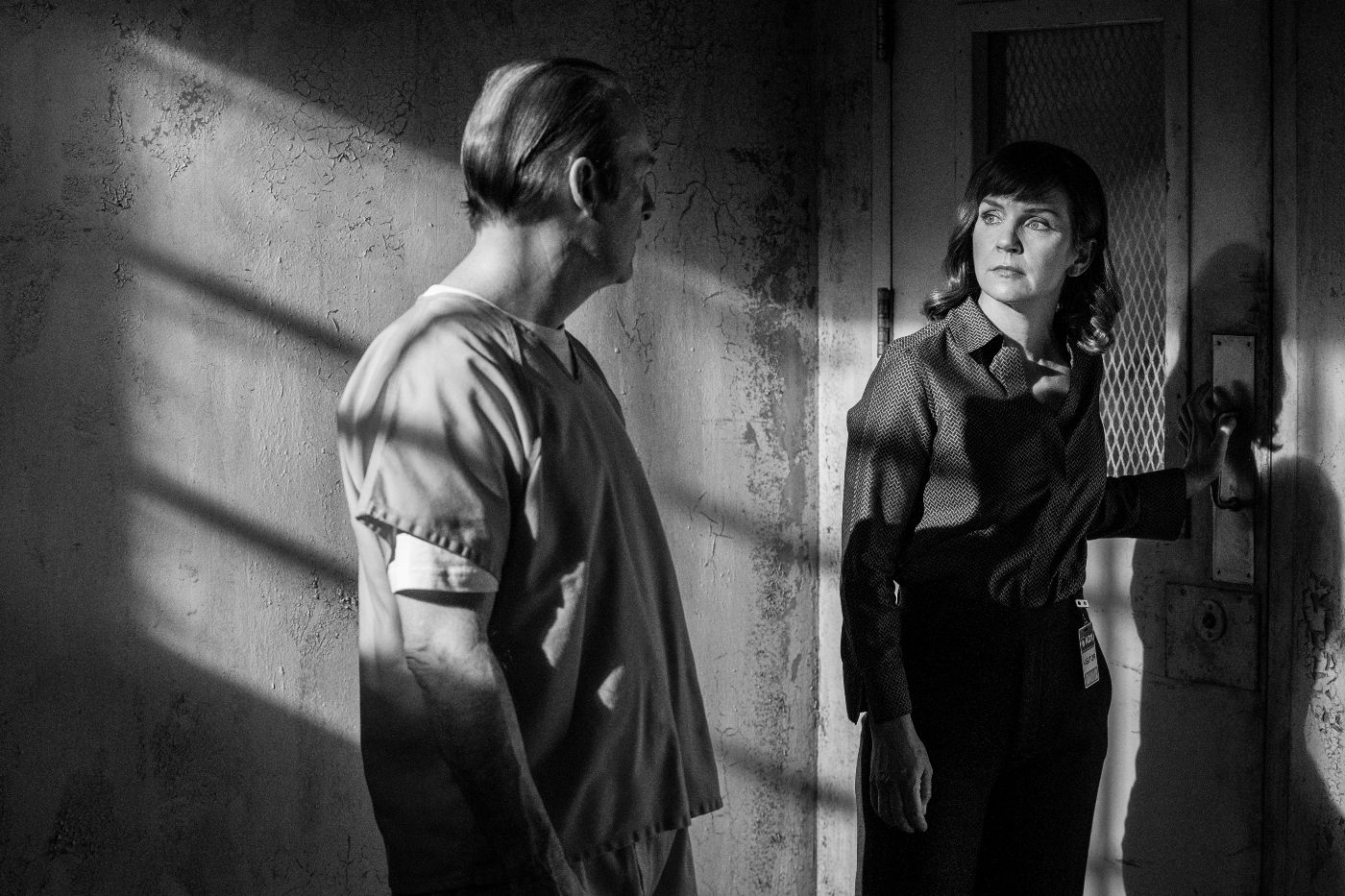Black and white cinematography has long been used by filmmakers to present high contrast images that draw the viewer's eye to key elements of the mise-en-scéne, such as a character or object whose importance needs highlighting. Shadows and darkness feel more imposing in black and white. A brightly lit shot will feel vibrant and safe, whereas a single brightly lit object might look threatened amidst a sea of oppressive darkness. Vince Gilligan's Better Call Saul makes use of black and white's stylishness with aplomb, using stark light lines and visual references to film noir to underscore the creeping dread felt by the show's main character as the metaphorical walls close in around him.
While some viewers might associate black and white primarily with classic films and television series, Better Call Saul makes the counterintuitive choice to set its modern day sequences in black and white and the main thrust of its story, taking place prior to the events of Breaking Bad, in color. At first, this choice is a tad jarring, forcing the viewer to remember that black and white means that the show is jumping forward in time past the entirety of a TV series that previously aired, but the monochrome presentation feels all too fitting during the series finale, in which the show's protagonist is forced to stop living in the comforting self-delusion that being morally gray frees him from personal responsibility.
Setting the Stage for the Finale
Better Call Saul is a captivating tale of questionable morality. Saul Goodman (Bob Odenkirk) is a clever but unscrupulous conman turned lawyer whose survival depends largely upon his singular ability to talk his way out of dangerous situations. The love of Saul's life, Kim Wexler (Rhea Seehorn), shares Saul's cleverness and knack for duplicity but lacks his growing willingness to hurt the innocent if it might mean helping himself. Kim provides a counterbalance to Saul's self-serving inclinations, a reminder to set limits and retain a shred of compassion for potential victims. But Saul provides temptations for Kim as well, coaxing her to use her charisma for grifting and confidence tricks, risky yet thrilling behaviors she starts to enjoy.
Once a carefully plotted con turns deadly, Kim breaks things off with Saul, citing the reason that they are "bad for each other" because their schemes result in other people suffering. Without Kim to remind Saul to consider the repercussions of his actions, he devolves from an occasionally empathetic huckster into a fully self-serving charlatan and accomplice to the budding drug kingpin, Walter White (Bryan Cranston), as seen in Breaking Bad.
Trapped in Black and White
Black and white is exceptional at caging an object or image in darkness, segmenting a 16:9 shot into smaller sections and thereby making whatever appears in the lit section look boxed in by shadows. In the series finale, "Saul Gone," when Marion (Carol Burnett) discovers that the seemingly kind Gene is none other than conman on-the-lam, Saul Goodman, she calls Life Alert to report him while Saul rushes to his car. Here we see Saul being boxed in by the black rectangles created by film noir style black and white lighting. First a shot of Saul reaching for his dropped car keys is framed so that the bottom of his vehicle takes up the top part of the frame. When he reaches underneath the car to retrieve them, he looks squashed and desperate amongst the shadows. When Marion gazes out the window at Saul fleeing the scene, her head is filmed in shadow so that the left third of the shot is darkness. The camera shakily pans to track her gaze as Saul's vehicle zooms away, providing a visual metaphor that Saul has bought himself a bit of time before the walls finally close in for good.
The next scene is shot a la David Fincher's Se7en by way of Carol Reed's The Third Man. Darkness surrounds Saul as he reaches into his hiding space to find his stowed valuables. We see him scramble for the box from the perspective of the hidey-hole itself, the shadows cloaking the majority of the shot, framing Saul with a relatively small square of light. As Saul seems to make a clean getaway, the shots brighten with daylight. He takes a moment to catch his breath before walking toward the inviting horizon. Then the whirring of a helicopter overhead quickens Saul's pace, sending him toward a dimly lit tunnel. Shrouded in shadow, merely a silhouette, he heads deeper into the tunnel and the fate that awaits him, the daylight disappearing at his back.
Noir to Run
Once Saul is caught and confined to a holding cell, we see more of the imposing black and white framing. At one point an overhead shot films Saul through a wire grating, cementing the fact that he is a caged animal, pacing out of frustration, dismay, and self-loathing. Here we see some dramatic light lines that reference classic noir detective films and perhaps even morality plays. As Saul paces, repeating, "This is how they get you?" to himself, he walks through a downcast stream of light that bisects the room like a god ray from the heavens, almost begging him to kneel in it and ask for forgiveness.
Saul's rage and self-centered mindset precludes him from acts of contrition, and he instead pounds the door with his fist while chastising himself. He crumbles to the floor, where he sees a bit of graffiti that changes his mood. It reads: "My lawyr will ream ur ass". This causes him to laugh, and the camera pulls back while he cackles, twin diagonal lines of shadow to his left and right growing, signaling his decision to fall back on his manipulative ways to save himself rather than accepting his punishment. Saul leaves the light and submerges himself in dim shadows when he pounds the door and demands another phone call.
Slim Pickens When It Comes to Justice
In a scene that follows, Saul enacts his plan to use all of his lawyerly expertise to slim down his sentence to the most manageable and enjoyable stay in prison possible. His meeting with the prosecution as well as Breaking Bad's Marie Schrader (Betsy Brandt) no longer apes the hand-wringing melodrama of bygone cinema; instead it feels more akin to Dr. Strangelove's war room. The wide shots, close-ups, and diagonals featuring seated characters around a table, along with the dark-paneled walls and the grim halo of an overhead light, harken back to Stanley Kubrick's classic dark satire. Although in Kubrick's film the room, light, and table are ovular, there is a palpable similarity between the Strangelove characters discussing brutal, tragic events with a detached, unsympathetic tone and Saul Goodman's similar cynicism. Saul performs some feigned emotionality followed by the reveal that he is all too willing to use his acting ability to manipulate the jury and potentially escape conviction if the case goes to trial.
Saul sees the proceedings as a game that he is poised to win and relishes in the opportunity to rub the prosecution's nose in the fact that he could easily get away scot-free should he so choose. His unsympathetic behavior is a reminder to the viewer that Saul is all too willing to pat himself on the back for his schemes regardless of who he hurts, so long as he can use his cleverness to lessen his own discomfort. There is darkly comic irony that the same behavior that led Saul to commit his legion of crimes might allow him to scrape by relatively unpunished. Here finale director, Peter Gould, uses visual cues to parallel the scene with Dr. Strangelove as a way of comparing the dark irony in each work.
How Saul Was Framed
Saul seems to have found his way out of the harsh sentencing that he deserves, but things take a turn when he realizes that Kim might face consequences for his behavior as well. In a stunning courtroom turnabout, Saul sacrifices his chance at a lighter sentence by confessing his crimes, as well as his sins, before the court and most importantly Kim, whom he hopes will find him still worthy of compassion. The scene begins with a walk down to the courtroom accompanied by the song, "All Things Are Possible" by The Harmonizing Four. The slow camera movement and meaningful glances set to music are reminiscent of the Coen Brothers, themselves no stranger to black and white or references to classic noir. As the hearing begins, the director misleads the viewer by suggesting that it is Kim and not Saul who will suffer because of the proceedings. In a striking bit of framing, the viewer sees Kim through the slats of the defendant's bench, a circular embellishment within its wooden pieces creating what looks like the crosshair of a gun pointing squarely at her. When we revisit Kim for reaction shots, her body language is noticeably tense, and the framing suggests a classic crime drama, one in which Kim is playing the part of the worrying mother about to see her son hanged for his crimes. This is all a skillful mislead, setting the stage for the third act of Saul Goodman's magic trick, the prestige.
As Saul approaches the podium, he is brightly lit, but the room around him aside from the judge's bench is still dark and foreboding. When he testifies, revealing the truth of his crimes and misdeeds, the ceiling is as dark as storm clouds overhead, but Saul himself is bathed in white light, as if finally basking in truth. When Saul speaks of his deceased brother Chuck, we see from the odd perspective of an exit sign, which buzzes with electricity, the same kind of hum that tormented Chuck while he was alive. Here the room seems bright, as if Chuck is perhaps looking down on his brother. Saul finishes confessing and tells those around him that he is Jimmy McGill, the name he was born with, a final sign that he is trying to be fully honest. His words damn him in the eyes of the law, but provide Saul, now Jimmy again, with a bit of emotional catharsis.
Black, White, and Morally Gray
When he is finally in prison, Kim meets with Jimmy in his cell. The god rays once again bathe sections of the room in caged light. They seem to shine most brightly over Kim herself, Jimmy's last chance at hope, humanity, or compassion. When Jimmy joins Kim for a cigarette in the caged sunbeam, light meets dark in a final moment together.
Director Peter Gould's use of black and white to draw the viewer's eye and aid in the framing of his shots is spectacular. He reminds the viewer of classic black and white films while also underscoring and symbolizing Saul Goodman's journey out of darkness and toward the light. Though Saul glimmers brightly as a glitzy lawyer amid murky moral grays, he finds a moment of redemption in the stark contrast of monochrome. In accepting the consequences of his dark behavior, Saul Goodman transforms from a conman into an honest one, allowing Jimmy McGill to finally step into the light.

